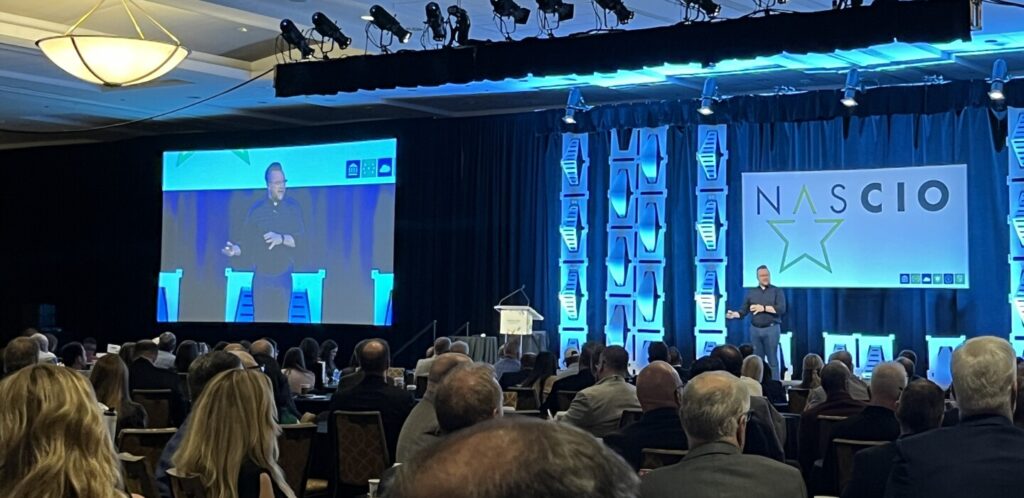Contradictory Reflections on the NASCIO Midyear Conference
Charles Dickens’ famous line, “It was the best of times, it was the worst of times,” encapsulates the mixed sentiments expressed during the recent National Association of State Chief Information Officers (NASCIO) Midyear Conference. This juxtaposition mirrors the complexity of the era surrounding the French Revolution, reflecting the joys and challenges faced by state CIOs and CISOs as they engage with industry thought leaders.
Positive Innovations in Government Services
On the optimistic side, there’s a palpable enthusiasm regarding the potential of artificial intelligence in transforming government service delivery. Many states are moving past preliminary concepts, achieving tangible results in select projects aimed at either government employees or citizens. Notable advancements are occurring in citizen-centric portals, cybersecurity, and various legacy modernization initiatives, aligning with CIO priorities set for 2025.
Challenges Facing State Leaders
Conversely, the “worst of times” narrative emerged through discussions about budget constraints, loss of federal grants, and program reductions. The disparity in outlook among states was surprising, with some leaders adopting a “wait and see” approach on several critical issues. While examples of these challenges were shared, many conversations were conducted off-the-record, emphasizing the delicate nature of the discussions.
What Makes NASCIO Unique?
Unlike other tech conferences, NASCIO events lack vendor exhibitions or live product demonstrations. Instead, attendees come together for meals and a series of keynote and breakout sessions focused on topics crucial to public-sector leadership. This year’s agenda featured inspiring examples from beyond typical government technology discussions, fostering an atmosphere of collaboration and exploration.
Highlights from the Learning Lounge
A standout session was the “Learning Lounge: Connecting States to AI Talent,” which discussed a report outlining six steps for developing an AI strategy. Key components included determining ownership of the AI strategy, issuing guidelines for its responsible use, and initiating employee training. An insightful point highlighted the importance of “prompt engineering,” showcasing the need for well-crafted prompts to maximize AI effectiveness while emphasizing the challenge of scaling this knowledge within non-technical government staff.
Cybersecurity Discussions and Strategies
Cybersecurity was another focal point at the conference, particularly strategies from Massachusetts aimed at mitigating vulnerabilities posed by AI tools. Six strategies were outlined: application modernization, regular system updates, multifactor authentication, centralized identity management, elimination of legacy processes, and employee training. Additionally, a session on creative initiatives for cybersecurity talent proposed innovative solutions to enhance talent acquisition within government entities.
A Sense of Community
While this year marked the first time in a decade that RSA Conference coincided with NASCIO Midyear, the networking opportunities remained a key highlight. The sense of community among current and former CIOs and CISOs proved invaluable, fostering relationships that extend beyond professional boundaries. The camaraderie was evident even during light-hearted moments, such as when a trivia team from Michigan celebrated their participation and bonding experience during the conference.



